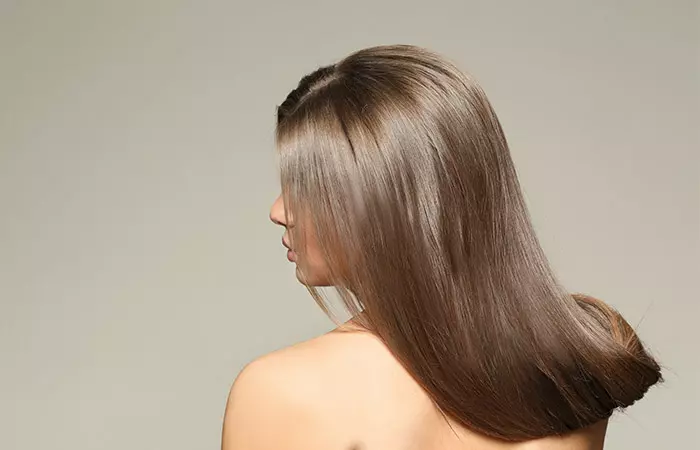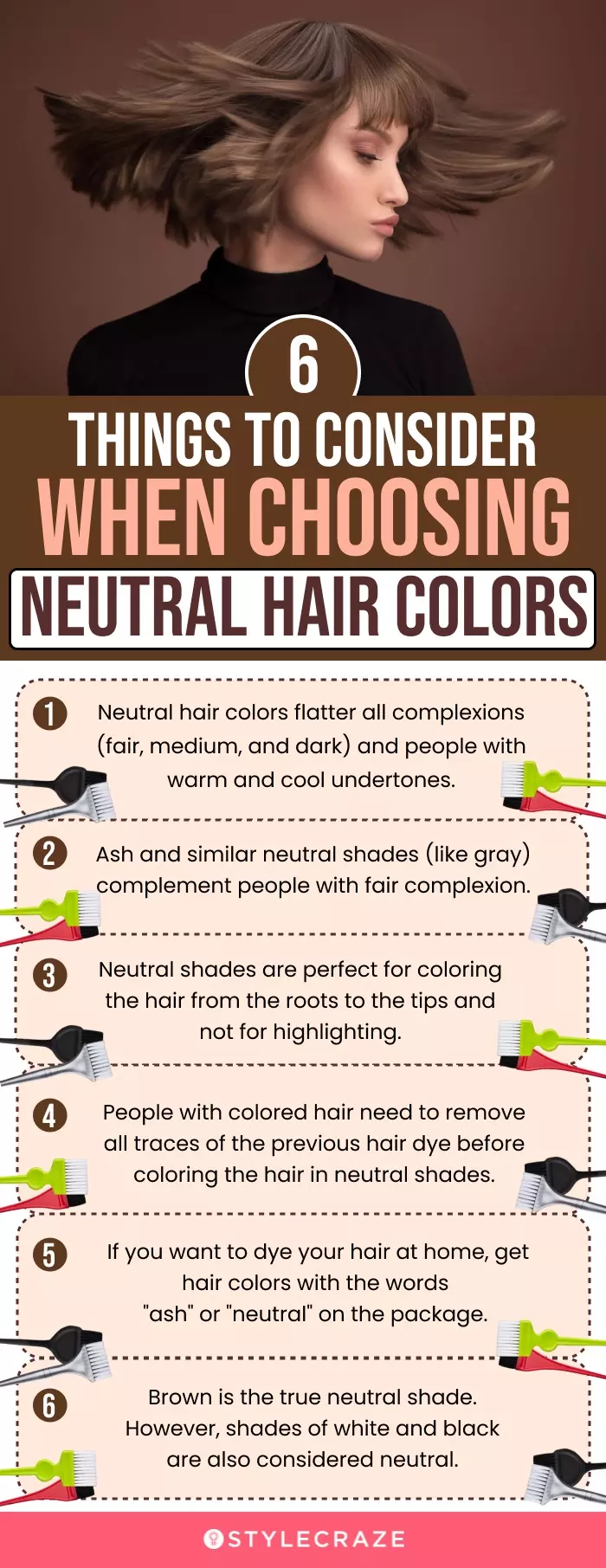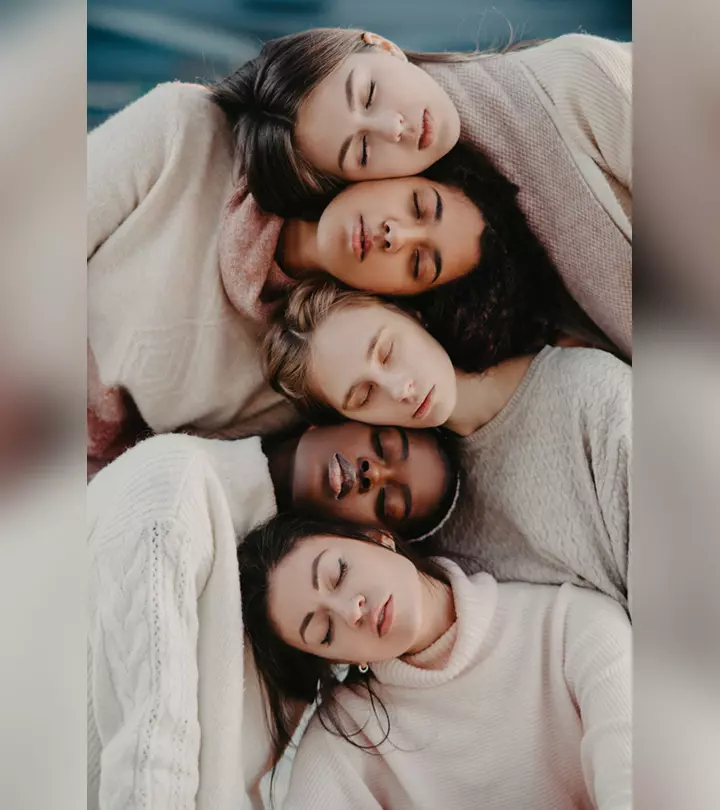How To Choose The Best Neutral Hair Color For Your Skin Tone
This handy guide helps you choose the hair color suitable for your skin tone.

Image: Shutterstock
You may have heard of warm and cool hair colors. But what are neutral hair colors? To help you figure out this hair trend, we have put together a neutral hair color guide.
Your hair color is determined by your genes. However, it does alter over time due to a variety of environmental factors and lifestyle changes. Most people are not happy with their natural hair color. While some use hair dyes to disguise their grays, others use colors to get a new look. Warm and cool tones are commonly used to classify hair color. Shades with a yellow undertone are described as “warm” and shades with a blue undertone are termed as “cool.” However, there are also neutral hair colors out there. Keep reading to learn all about neutral hair colors!
In This Article
What Are Neutral Hair Colors?

Neutral color does not have any particular tone but can be compared to the color of the sand at a beach. Ahh, what a poetic description of hair color! The problem with neutral color is that it does not show up in one application and needs at least a couple of attempts of coloring to really shine through. When applying a neutral color, one should always ask the hairstylist to touch up with a color gloss in between applications as it will keep away unwanted tones. Neutral color can also be compared to ashy color. The only difference being that ashy is darker than neutral tone. If one wants to get the perfect neutral tone, then one should get the ashy color done and after that, shampoo at least two to three times, so that the ashy color slowly fades away and makes way for the perfect neutral color.
The only problem with this is that nobody wants to shampoo a couple of times and achieve the perfect color. What everyone looks forward to is to walk out of the salon with a head full of perfectly colored hair. But that’s asking for way too much from the stylist. We need to put in some effort if we want our hair to look good. It is also important to condition the hair with good hair products on a regular basis when applying neutral hair color to maintain hair health. Neutral color starts getting dull with repeated washing; therefore, to bring back the gloss and shine, one must condition the hair.
 Quick Tip
Quick TipKey Takeaways
- Neutral hair colors lie between warm and cool ones and are suitable for most skin tones.
- They require multiple application sessions for the color to come through as intended.
- Shades of white and black are neutrals and brown is considered to be a truly neutral color for it complements every skin tone.
- Neutral colors can lose their shine over time, hence remember to condition your hair for the glossy look.
- Usually an equal mix of the three primary colors is what results in neutral hair color tones, and they are generally provide full coverage and distinct hues.
Advantages of Neutral Hair Colors

The advantage of a neutral color is that it compliments almost all skin tones – fair, medium or dark. The only point one should consider before applying neutral color is that whether it enhances or flatters one’s looks.
- Neutral hair colors suit both warm and cool skin tones. Hair colors such as black, light and dark shades of brown can be termed as neutral colors as they pair up nicely with all skin tones.
- People with a cool skin tone should always opt for a neutral shade as they are already fair and have a tint of olive on their skins. Fair-skinned people should avoid red or golden blonde but rather stick to ash or other neutral tones. You should find the best neutral red or blonde color that suits your skin tone if you wish to try them.
- If one does not want to experiment too much but rather wants their hair to be of one color from roots to the tips, then one should consider a neutral color. To achieve a neutral or an ashy color, one should first go to a professional and remove all traces of previously applied color from their hair. But if one is dyeing the hair on their own, then one should always buy a dye with the word ‘ash’ or ‘neutral’ in the color name.
- Generally, white, black, and brown shades are considered neutral and the different tones and hues complement different complexions.
- Neutral hair colors create a balanced look, perfect for those who want a subtle and natural look.
 Trivia
TriviaInfographic: 6 Things To Consider When Choosing Neutral Hair Colors
Neutral colors look wonderful on most skin tones and undertones and may help conceal gray hair. They are ideal for anyone who wants to update their hair color without dramatic changes. These shades add a glossy sheen to the tresses. However, not all neutral shades may complement all skin tones. There are a few other factors you should consider before opting for a neutral color. Check out the infographic below to learn more.

Illustration: StyleCraze Design Team
Neutral hair color tones are often a blend of equal portions of the three primary colors. These hues are commonly used to hide white or gray hair because they provide full coverage and distinct tones. These natural shades are classic choices that work well for a range of skin tones.The neutral hair color guide in this article is sure to help you pick a shade that looks natural and versatile. However, neutral color schemes are inappropriate if you desire a dramatic hair transformation. In such cases, try opting for more daring hues, such as blonde or copper. If you require further assistance, it is a good idea to visit a hair salon and consult a hair expert to help you choose the best hair color for your skin tone. Along with it, also ask about hair maintenance, hair care, and above all the best hair styling tips.
Frequently Asked Questions
Do neutral hair colors look good on everyone?
Neutral hair colors look good on everyone because they suit warm and cool undertones and fair, medium, and dark skin tones.
What is the difference between natural and neutral hair color?
Natural hair colors are single pigment colors. They can be warm (gold, honey, caramel, light brown, light auburn) and cool (dark brown, ash blonde, and dark auburn). Neutral hair color is a balanced mix of all primary colors. Generally, brown, white, and black shades are considered neutral and the different tones and hues complement different complexions.
How do I maintain my neutral hair color, and what products should I use to keep it looking healthy and vibrant?
To maintain any colored hair, use sulfate-free shampoo and conditioner, reduce heat application, protect hair from sun damage, and get regular trims. Deep conditioning helps prevent it from becoming dull.
How often should I touch up my roots if I have a neutral hair color, and what is the best technique to use?
The frequency of touch-ups is dependent on the rate of hair growth. Neutral hair colors are often used for all-over hair coloring, and you may need frequent touch-ups if the color contrasts with your natural hair color. The time span for touch-ups is usually 4-6 weeks, and you can do it yourself with a home kit or consult a hairstylist.
What are some common mistakes to avoid when dyeing your hair a neutral color, such as choosing the wrong shade or over-processing your hair?
Neutral colors are tricky as they have neither warm nor cool undertones. Pick a neutral shade that matches your skin tone and eye color. Use a high-quality hair coloring product with matching color-safe shampoo and conditioner to ensure vibrant and healthy hair for longer.
Illustration: How To Choose The Best Neutral Hair Color For Your Skin Tone

Image: Stable Diffusion/StyleCraze Design Team
Discover the best hair color for your face in the video below! Learn how to choose the perfect shade based on skin tone, facial features, structure, and style. Get the look you’ve always wanted!
Read full bio of Madison Dufour
Read full bio of Jyotsana Rao
Read full bio of Madhumati Chowdhury
Read full bio of Bhumika Daga


























Community Experiences
Join the conversation and become a part of our empowering community! Share your stories, experiences, and insights to connect with other beauty, lifestyle, and health enthusiasts.